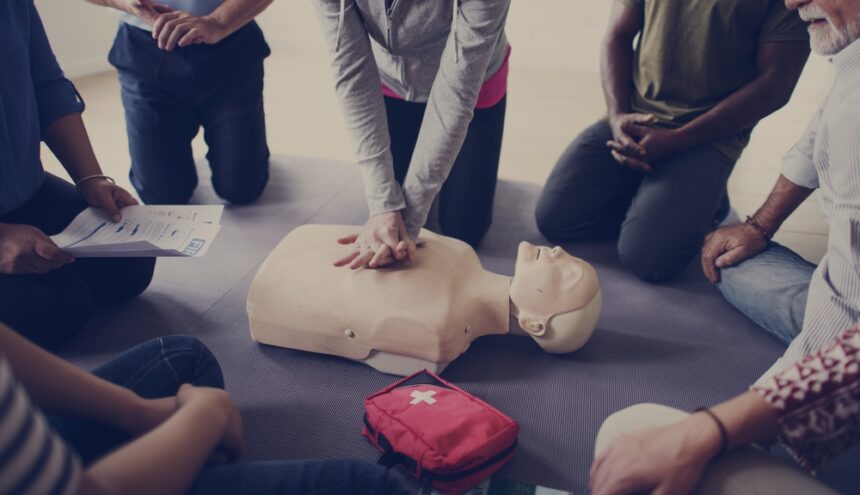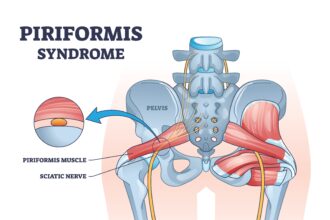Workplace health and safety is very important. The good news is that society is making a lot of progress on this front. The Occupational Health and Safety Administration reports that the number of worker deaths a day dropped from 38 in 1970 to 13 a day in 2020.
- The Significance of First Aid Training to Keep Employees Safe and Healthy
- 1. First Aid: A Life Saver
- 2. Prompt Emergency Response
- 3. Minimizing Further Harm
- 4. Compliance with Legal Obligations
- 5. Safeguarding Workplace Health and Safety
- Boosting Employee Morale and Confidence
- Fostering a Positive Workplace Culture
- In conclusion
- Frequently Asked Questions
Nevertheless, there is still a lot of work that can be done. The COVID-19 pandemic helped us recognize the importance of improving workplace hygiene, which is crucial for employee health and safety. We are starting to recognize the need to practice other workplace health and safety tips as well.
Another way that you can promote workplace safety is by teaching employees first aid. This can be very helpful if you run a workplace where injuries are very common. Keep reading to learn more.
The Significance of First Aid Training to Keep Employees Safe and Healthy
Understanding fundamental first aid procedures can be the critical factor in life-or-death situations. Emergencies have no specific location; they can occur anywhere, even in the workplace. This underscores the importance of everyone considering first aid training. You will need to know the difference between first aid and CPR before proceeding.
Let’s begin by exploring five compelling reasons why first aid training is crucial, and why employers and leaders should strongly consider enrolling their teams in a nationally recognised first aid training course.
1. First Aid: A Life Saver
In emergency scenarios, time is of the essence. Knowledge of first aid techniques can make a pivotal difference. Swift and effective response can make the difference that saves a life or prevents more severe injuries. Despite the obvious importance of first aid training, a 2017 study conducted by the Australian Red Cross, showed a mere five percent of Australians have received first aid training, marking one of the lowest rates worldwide.
2. Prompt Emergency Response
In emergency situations like choking, cardiac arrests, and severe bleeding, giving first aid within the critical first few minutes greatly increases a patient’s chances of survival. First aid training equips workers to identify emergency signs, execute the appropriate procedures, and provide immediate assistance while awaiting professional medical help.
3. Minimizing Further Harm
First aid proficiency can be the determining factor between a full recovery and a lifelong disability. Immediate administration of first aid can prevent additional harm and reduce the impact of an injury. Simple actions like securing a fractured limb or exerting pressure on a wound serve to steady a patient and ward off potential complications.
4. Compliance with Legal Obligations
In workplaces, providing adequate first aid education is not only a best practice; it’s a legal requirement. Neglecting to provide employees with adequate first aid training may result in significant legal and financial consequences for the company.
5. Safeguarding Workplace Health and Safety
Certain industries, like construction, healthcare, and mining, necessitate mandatory first aid training due to their high-risk environments. Employers can ensure their teams are prepared to handle emergencies by providing comprehensive first aid training. This not only ensures compliance but also bolsters the safety of employees and the community alike.
Boosting Employee Morale and Confidence
The importance of first aid training extends beyond employees’ health and safety; it also enhances their confidence and morale in the workplace. Learning first aid provides workers with skills that benefit the whole of their lives, fostering a culture of confidence and empowerment.
Empowerment Through Training
According to this article from the Red Cross, first aid training helps workers feel more empowered and confident in their abilities. This newfound confidence translates into increased productivity and job satisfaction. Employees who have received first aid training often feel more valued by the company for their newly acquired skill set, creating a positive impact on their sense of worth.
The Royal Life Saving organization’s estimates indicate that 60 percent of injuries necessitating first aid occur within households. Furthermore, it is reported that twenty Australians succumb to heart attacks daily. In the light of facts like these, it is difficult to imagine a more important benefit that employers could provide for their workers than access to nationally accredited first aid training.
Fostering a Positive Workplace Culture
Prioritise a workplace culture that places a premium on safety and well-being by investing in first aid training for your team. Demonstrating a commitment to the health and safety of your employees sends a powerful message of respect and value, leading to better retention and recruitment.
Reducing Downtime and Costs
Investing in workers’ first aid training significantly reduces downtime and costs resulting from workplace accidents and injuries. Swift first aid administration leads to faster recovery times, ultimately lessening the impact on an employee’s work and personal life.
Demonstrating Commitment to Health and Safety
By investing in first aid training, companies not only demonstrate their commitment to workplace health and safety but also enhance their reputation, foster stronger stakeholder relationships, and drive overall success.
Prioritising employee safety, employers take proactive steps to prepare their workforce for emergencies through comprehensive first aid training programs. This dual commitment to both workplace safety and employee well-being creates a positive environment that benefits everyone involved.
In conclusion
The importance of first aid extends far beyond the workplace; it’s a fundamental life skill. By prioritising first aid training, employers demonstrate their unwavering commitment to health and safety. Enroll your workers with the First Aid Course Experts to equip them with the knowledge and skills needed to provide vital first aid response and life support in workplace emergencies.
Frequently Asked Questions
1. How often should first aid training be renewed?
According to Safe Work Australia, it’s advisable to refresh first aid training every three years. Nevertheless, the renewal frequency might hinge on the industry’s hazard level which is linked with the nature of the workplace. Industries with elevated risks might necessitate more frequent updates. Specifically, the CPR aspect should be refreshed annually.
2. Can first aid training be done online?
Absolutely, in Australia, the theoretical part of first aid training can be accomplished online. Although online training provides flexibility, enabling participants to learn at their own speed and convenience, it may not offer the equivalent hands-on practice as in face-to-face sessions. The hands-on section of the first aid training program must be carried out in person to guarantee that participants can proficiently showcase the required skills.
3. What should I expect from a first aid training course?
In Australia, a typical first aid course encompasses a variety of subjects and proficiencies essential for delivering immediate care in emergencies. This involves fundamental life support, CPR, and the operation of automated external defibrillators (AEDs).
Attendees will also be instructed on administering first aid for particular injuries and medical conditions like burns, fractures, and allergic reactions. Additionally, they’ll be trained to handle critical medical situations such as heart attacks and strokes.
There are various categories of first aid courses tailored to meet distinct workplace and industry requirements, including workplace first aid, child care first aid, and sports first aid. Please follow the link If you are looking for an accredited first aid course in Dandenong, Tullamarine, or Australia wide.










